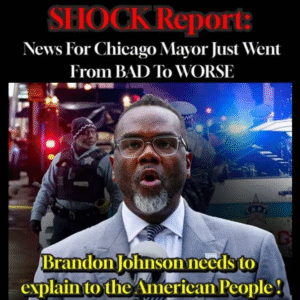Blood and Boundaries: Chicago’s Labor Day Tragedy and the Battle Over Federal Help
The numbers were staggering. By Tuesday morning, Chicago police had confirmed at least 58 people shot, eight of them fatally, over the Labor Day weekend. The victims ranged from teenagers to senior citizens, caught in drive-by shootings, domestic disputes, and random acts of violence. It was the city’s most violent holiday weekend of the summer.
And it unfolded under a cloud of political confrontation.
President Donald Trump, citing the surge in gun violence, renewed his threats to deploy federal agents and National Guard troops to Chicago. “Chicago is the worst and most dangerous city in the world, by far,” he wrote on his social media platform. “Pritzker needs help badly, he just doesn’t know it yet. I will solve the crime problem fast, just like I did in DC. Chicago will be safe again, and soon”.
But Illinois Governor JB Pritzker and Chicago Mayor Brandon Johnson weren’t having it.
On Saturday, Johnson signed the “Protecting Chicago Initiative,” an executive order that explicitly blocks local police from collaborating with federal agents on patrols, arrests, or immigration enforcement. “We will not have our police officers deputized to do traffic stops and checkpoints for the president,” Johnson said. “We do not want to see tanks in our streets. We do not want to see families ripped apart”.
Pritzker echoed the resistance, calling Trump’s plan “unprecedented and unwarranted. It is illegal, it is unconstitutional, it is un-American”.
The clash between federal and local leadership has ignited a firestorm of debate. Supporters of Trump argue that the city’s leadership has failed to protect its citizens and that federal intervention is necessary. Critics warn that militarizing urban spaces could inflame tensions and erode civil liberties.
Meanwhile, the violence continues.
Among the weekend’s victims was a 25-year-old woman fatally shot inside her apartment in South Shore. In East Garfield Park, a 29-year-old man was killed when a gunman exited a dark SUV and opened fire. In Altgeld Gardens, a 43-year-old woman was gunned down. A 33-year-old man was shot in the head during an argument in Englewood. And in Bronzeville, seven people were wounded in a drive-by attack on South State Street.
The city’s trauma was compounded by the political spectacle. As families mourned, press conferences unfolded. As vigils were held, executive orders were signed. And as children recovered in hospitals, the nation debated the meaning of safety.
Chicago’s crime statistics paint a complicated picture. According to Mayor Johnson’s office, violent crime is down 21.6% year-to-date, and homicides have fallen by 32.3%. But the Labor Day weekend told a different story—one of concentrated violence, mass shootings, and lives lost.
For residents, the numbers are more than data points. They are funerals. They are empty chairs at dinner tables. They are neighborhoods gripped by fear.
Kathleen Miles, a Chicago resident who was assaulted downtown in August, spoke out on national television. “I think it’s a disservice to all of us citizens of this state and of this city to not accept the help to minimize the problem and come up with a solution,” she said.
Her words reflect a growing frustration among many Chicagoans who feel caught between political ideologies and real-world consequences. They want safety. They want accountability. And they want leaders who prioritize people over power.
Trump’s critics argue that his approach is more about optics than outcomes. His threats to “go in” with federal troops mirror past rhetoric used in cities like Portland and Washington, D.C., where deployments sparked controversy and legal challenges. Pritzker has vowed to take Trump to court if he follows through.
But Trump insists his plan is effective. “I will solve the crime problem fast,” he said. “Just like I did in DC”.
The question is: at what cost?
Deploying the National Guard to a major American city is not a decision to be taken lightly. It raises concerns about militarization, civil rights, and the role of federal power in local governance. It also risks deepening mistrust between communities and law enforcement—especially in neighborhoods already scarred by violence and systemic inequality.
Mayor Johnson has warned that such actions could “inflame tensions between residents and law enforcement” and described Trump’s approach as “uncoordinated, uncalled for, and unsound”.
Still, the urgency is real.
Chicago’s Labor Day weekend was not an anomaly. It was part of a pattern—one that demands bold, compassionate, and collaborative solutions. Whether those solutions come from federal agents, community programs, or policy reform remains to be seen.
But one thing is clear: the city is at a crossroads.
It must decide how to balance autonomy with assistance. How to protect its people without compromising its principles. And how to move forward in a way that honors both safety and dignity.
As the sun set on a bloodied weekend, the city mourned. And as the political battle raged on, Chicagoans waited—not for speeches, not for threats, but for change.



